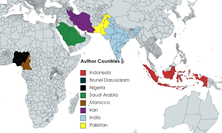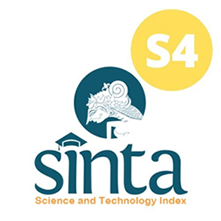Design and Build a Ventilator Tester with a Peak Inspiratory Flow Waveform Display as Validation using the F1031V Sensor
Abstract
The ventilator is a supporter of respiratory needs which is very important for the patient so that there are several parameters that must be monitored specifically, such as the measurement of pressure and flow rate used in the ventilator system, the accuracy of which must be in accordance with the accuracy of the respirator. One of the important parameters to monitor is PIF (Peak Inspiratory Flow) which is the peak inspiratory flow rate given through the ventilator. PIF that is too high or too low can cause adverse effects on the patient. PIF monitoring can be seen through the PIF value and waveform on the PIF. Monitoring the waveform of the PIF will be very useful to improve the results of using the ventilator. The purpose of this research is to get the accuracy and precision of the sensor to display the waveform of the ventilator output. The procedure carried out is to use the F1031V sensor to detect the flow generated by the ventilator and then detect the PIF value and PIF waveform. From this research, the measurement of accuracy and precision of the F1031V sensor to detect PIF and generate a waveform graph is said to be good. This is because the highest error value is ±2.04% at the 20 LPM setting. While the value of the largest standard deviation at the 30 LPM setting is 1.517 and the greatest uncertainty value at the 30 LPM setting is 0.061. Then, the largest correction value is found in the setting of 20 LPM and 30 LPM, namely 0.4. PIF monitoring is carried out to maximize patient care and reduce the breakdown time on the ventilator.

This work is licensed under a Creative Commons Attribution-ShareAlike 4.0 International License.
Authors who publish with this journal agree to the following terms:
- Authors retain copyright and grant the journal right of first publication with the work simultaneously licensed under a Creative Commons Attribution License that allows others to share the work with an acknowledgement of the work's authorship and initial publication in this journal.
- Authors are able to enter into separate, additional contractual arrangements for the non-exclusive distribution of the journal's published version of the work (e.g., post it to an institutional repository or publish it in a book), with an acknowledgement of its initial publication in this journal.
- Authors are permitted and encouraged to post their work online (e.g., in institutional repositories or on their website) prior to and during the submission process, as it can lead to productive exchanges, as well as earlier and greater citation of published work (See The Effect of Open Access).











